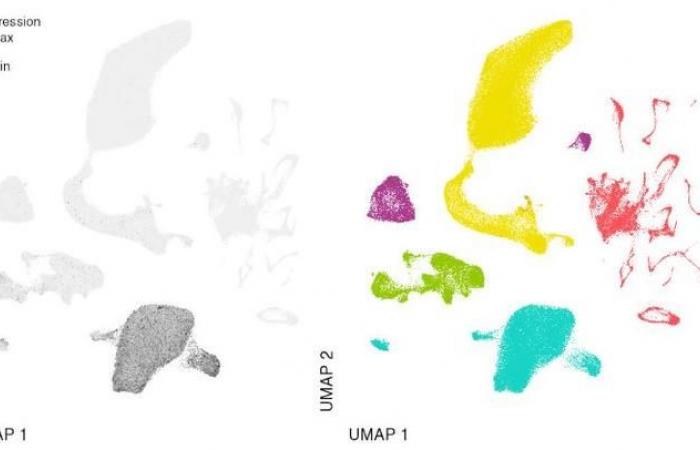By combining advanced molecular mapping technologies and artificial intelligence (AI), EPFL scientists are publishing an open source “atlas” to provide an in-depth understanding of the biology of spinal cord injuries in mice. This work opens the way to new therapies.
The human spinal cord is one of the most complex biological systems known to science, EPFL noted in a press release on Wednesday. This cellular complexity amplifies the challenges of effectively treating paralysis caused by spinal cord injury.
Until now, traditional imaging and mapping methods only offered a general view of the cellular mechanisms of spinal cord injury. Scientists have taken an important step in mapping the cellular and molecular dynamics of paralysis in unprecedented detail through their open access project named “Paralytic Tables“.
“In this studywe wanted nothing more and nothing less than to revolutionize the biological understanding of spinal cord injuries”, writes professor of neuroscience at EPFL Grégoire Courtine, quoted in the press release. The work opens the way to targeted treatments and improvement healing.”
Astrocytes favorables
The first is targeted gene therapy. Developed in collaboration with Bernard Schneider, colleague atinstitut Neuro-X at EPFL, it is based on a crucial discovery: researchers found that a specific type of support cell, called astrocyte, lost its ability to respond to lesions in aged animals.
>> Read also: A Lausanne research team cures paralyzed mice, a hope for humans
“For much of the last hundred years, it was believed that astrocytes were unfavorable for neuronal repair. Our data overturn this idea and suggest an essential protective role of these cells, which can be exploited to repair spinal cord injuries spinal cord,” says EPFL’s Mark Anderson, a lead author of the EPFL study.
>> Read also: Scientists from Lake Geneva discover a new type of cell in the brain
Another important result is the identification of a specific subset of neurons, called Vsx2which are naturally equipped to promote healing, adds Jordan Squair, another lead author.
Rely on artificial intelligence
To create the first comprehensive cellular map of spinal cord injury in rodent models, scientists used two innovative technologies: single-cell sequencing and spatial transcriptomics.
The new data is so rich that new machine learning techniques had to be developed to exploit its complexity. This computerized approach leverages artificial intelligence to map the immediate genetic responses of individual cells, as well as to situate these responses within the physical and temporal landscape of the spinal cord.
Detailed map
“We have a detailed map that shows us not only which cells are involved, but also how they interact and change during the injury and healing process,” explains Jordan Squair. This comprehensive understanding is crucial for developing treatments that are precisely tailored to specific cells and unique requirements for healing various lesions.
Although this study was carried out on rodent models, the knowledge acquired should translate into clinical applications, for which Grégoire Courtine and his team are carrying out studies. significant progress for over a decade.
>> Review “A new implant allows paraplegic people to walk again”:
>> Read also: The neuron that allows patients to walk again identified in Lausanne et Three paraplegics walk again thanks to a promising Swiss implant
ats/sjaq






